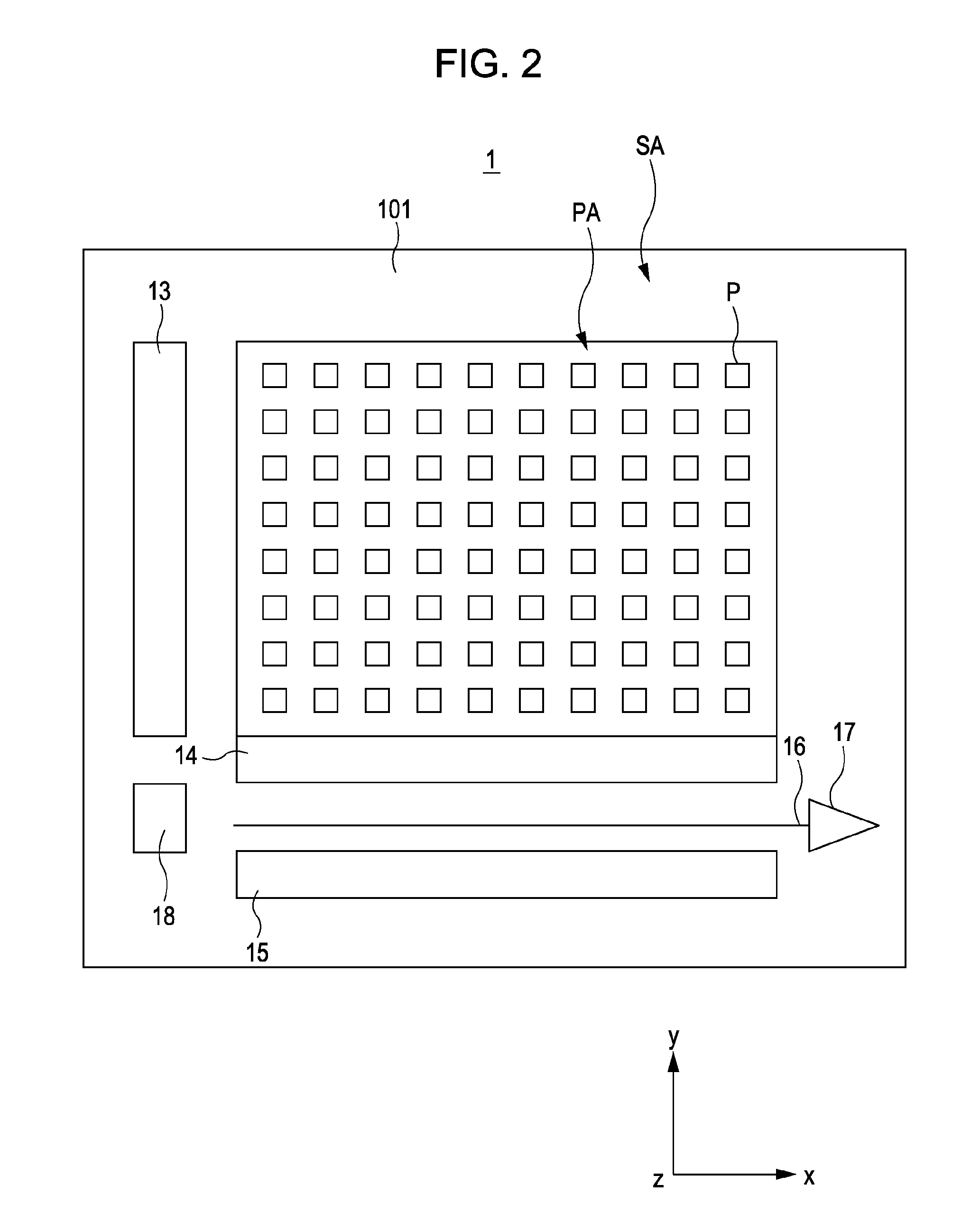Solid-state imaging device, electronic apparatus, and method for making solid-state imaging device
a solid-state imaging and electronic equipment technology, applied in the direction of electrical equipment, semiconductor devices, radio frequency controlled devices, etc., can solve the problems of difficult to employ this process to form a photodiode, large amount of misalignment between the transfer gate electrode and the photodiode, and the inability to achieve the effect of forming a photodiode, so as to improve the image quality of captured images
- Summary
- Abstract
- Description
- Claims
- Application Information
AI Technical Summary
Benefits of technology
Problems solved by technology
Method used
Image
Examples
first embodiment
1. First Embodiment
[A] Device Configuration
(1) Overall Configuration of Camera
[0039]FIG. 1 is a diagram showing a configuration of a camera according to an embodiment of the present invention.
[0040]As shown in FIG. 1, a camera 200 includes a solid-state imaging device 1, an optical system 202, a driving circuit 203, and a signal processing circuit 204 which are described below.
[0041]The solid-state imaging device 1 has a surface that receives incident light (image of an object to be captured) that has entered through the optical system 202. The solid-state imaging device 1 converts the incident light into electric charges to generate signal charges and outputs raw data. The solid-state imaging device 1 is driven in accordance with control signals output from the driving circuit 203. The detailed structure of the solid-state imaging device 1 is described below.
[0042]The optical system 202 includes an imaging lens (not shown) and a diaphragm (not shown) and is arranged so that the inc...
second embodiment
2. Second Embodiment
[A] Device Configuration
[0164]FIG. 10 is a cross-sectional view of a solid-state imaging device according to a second embodiment of the present invention.
[0165]As shown in FIG. 10, a solid-state imaging device 1b of this embodiment differs from the first embodiment in the arrangement of the transfer gate electrode (transfer gate electrode 22gb). The second embodiment is the same as the first embodiment in other features. Thus, the description is simplified to avoid redundancy.
[0166]As shown in FIG. 10, the transfer gate electrode 22gb is formed on a gate insulating film 54b and continuously extends from a part of a trench REb to the upper surface of a p-type semiconductor layer 20b of a photodiode 21b. In other words, the transfer gate electrode 22gb continuously extends from above a channel-forming region CHb to above the p-type semiconductor layer 20b with the gate insulating film 54b therebetween. The solid-state imaging device 1b has the same configuration as...
third embodiment
3. Third Embodiment
[A] Device Configuration
[0181]FIG. 12 is a cross-sectional view of a solid-state imaging device according to a third embodiment of the present invention.
[0182]As shown in FIG. 12, a solid-state imaging device 1c of this embodiment differs from the first embodiment in the arrangement of the transfer gate electrode (transfer gate electrode 22gc). The third embodiment is the same as the first embodiment in other features. Thus, the description is simplified to avoid redundancy.
[0183]As shown in FIG. 12, the transfer gate electrode 22gc continuously extends from a part of a gate insulating film 54c above a channel-forming region CHc to a part of a gate insulating film 42c on a silicon film 40c above a photodiode 21c. The solid-state imaging device 1c has the same configuration as the first embodiment except for this.
[0184]In this embodiment, the transfer gate electrode 22gc is formed not on the a buried oxide film 30c but on the gate insulating film 42c. The size of t...
PUM
 Login to View More
Login to View More Abstract
Description
Claims
Application Information
 Login to View More
Login to View More - R&D
- Intellectual Property
- Life Sciences
- Materials
- Tech Scout
- Unparalleled Data Quality
- Higher Quality Content
- 60% Fewer Hallucinations
Browse by: Latest US Patents, China's latest patents, Technical Efficacy Thesaurus, Application Domain, Technology Topic, Popular Technical Reports.
© 2025 PatSnap. All rights reserved.Legal|Privacy policy|Modern Slavery Act Transparency Statement|Sitemap|About US| Contact US: help@patsnap.com



